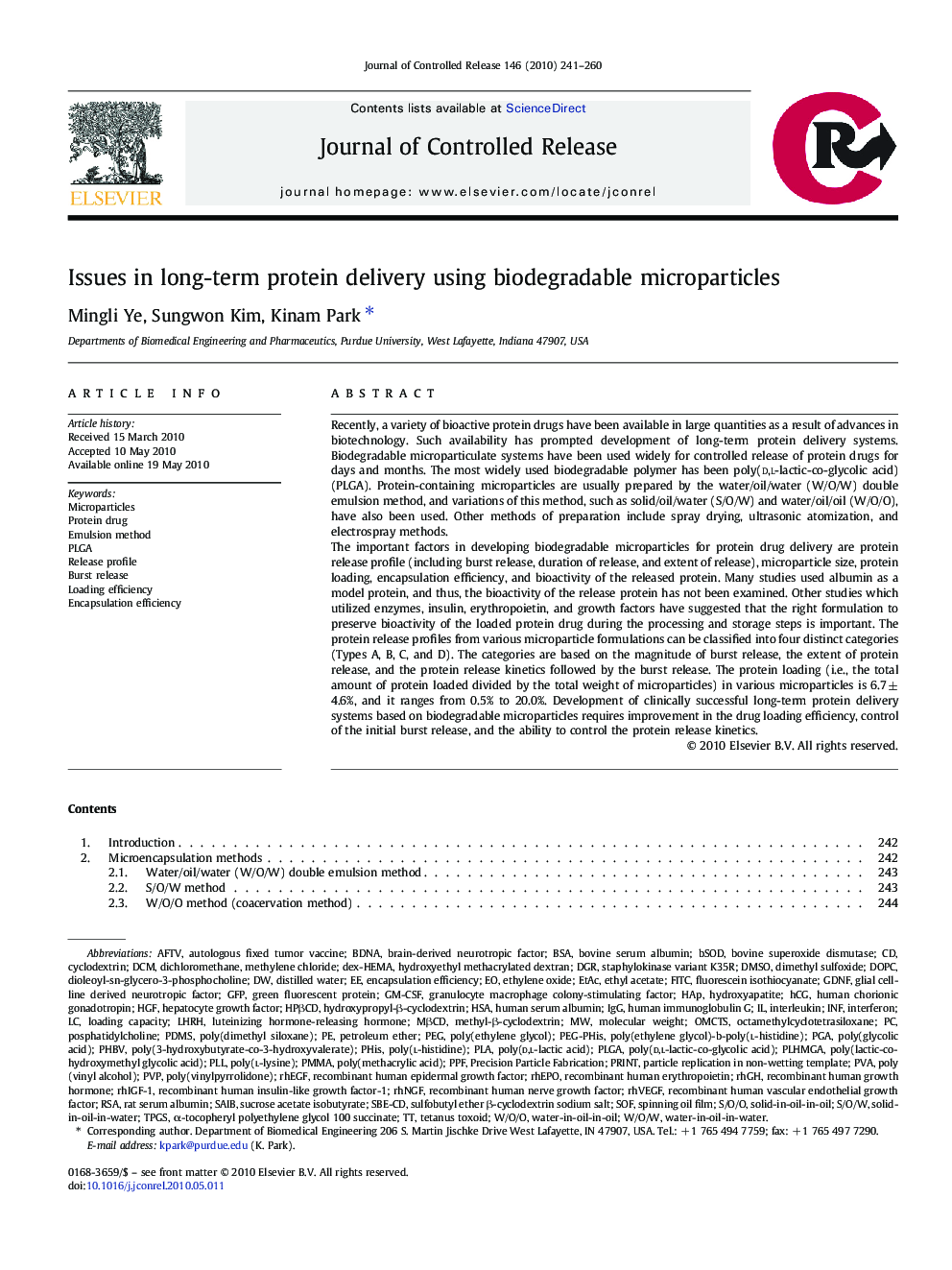| Article ID | Journal | Published Year | Pages | File Type |
|---|---|---|---|---|
| 1425613 | Journal of Controlled Release | 2010 | 20 Pages |
Recently, a variety of bioactive protein drugs have been available in large quantities as a result of advances in biotechnology. Such availability has prompted development of long-term protein delivery systems. Biodegradable microparticulate systems have been used widely for controlled release of protein drugs for days and months. The most widely used biodegradable polymer has been poly(d,l-lactic-co-glycolic acid) (PLGA). Protein-containing microparticles are usually prepared by the water/oil/water (W/O/W) double emulsion method, and variations of this method, such as solid/oil/water (S/O/W) and water/oil/oil (W/O/O), have also been used. Other methods of preparation include spray drying, ultrasonic atomization, and electrospray methods.The important factors in developing biodegradable microparticles for protein drug delivery are protein release profile (including burst release, duration of release, and extent of release), microparticle size, protein loading, encapsulation efficiency, and bioactivity of the released protein. Many studies used albumin as a model protein, and thus, the bioactivity of the release protein has not been examined. Other studies which utilized enzymes, insulin, erythropoietin, and growth factors have suggested that the right formulation to preserve bioactivity of the loaded protein drug during the processing and storage steps is important. The protein release profiles from various microparticle formulations can be classified into four distinct categories (Types A, B, C, and D). The categories are based on the magnitude of burst release, the extent of protein release, and the protein release kinetics followed by the burst release. The protein loading (i.e., the total amount of protein loaded divided by the total weight of microparticles) in various microparticles is 6.7 ± 4.6%, and it ranges from 0.5% to 20.0%. Development of clinically successful long-term protein delivery systems based on biodegradable microparticles requires improvement in the drug loading efficiency, control of the initial burst release, and the ability to control the protein release kinetics.
Graphical abstractFigure optionsDownload full-size imageDownload as PowerPoint slide
